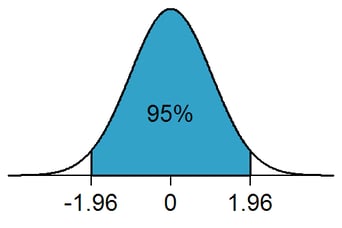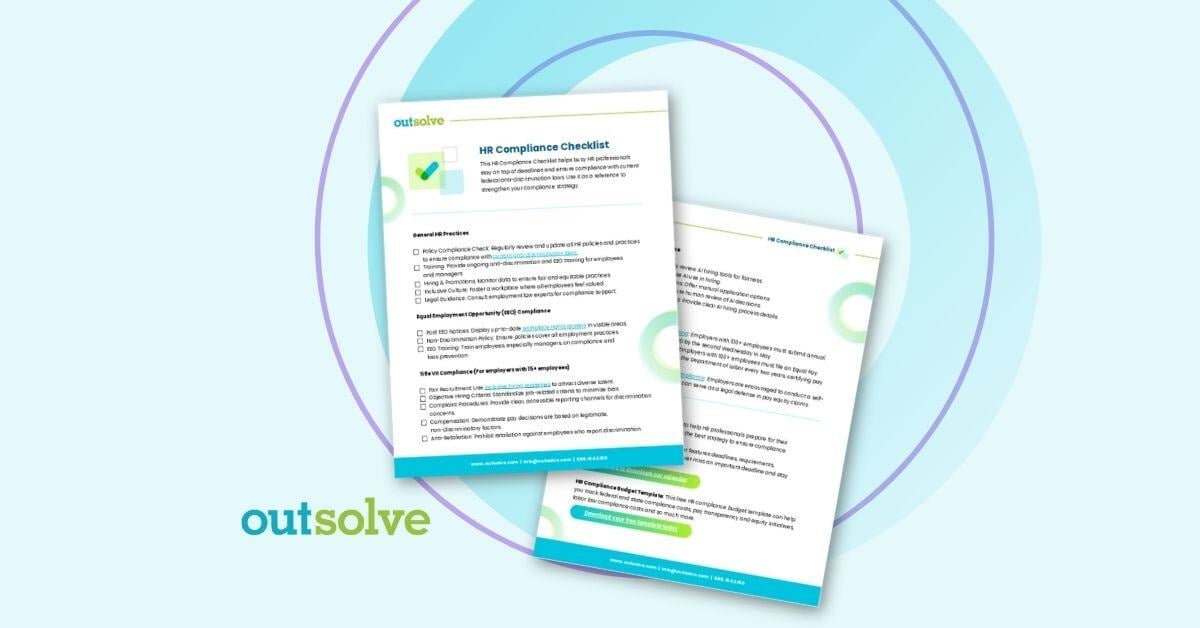1 min read
Statistics Minute: What is Standard Deviation in Affirmative Action?
 Nick Jones
:
Jan 31, 2022 8:00:00 AM
Nick Jones
:
Jan 31, 2022 8:00:00 AM
.png)
If you have ever looked closely at the Disparity Analysis section in your AAP, you will see numbers concerning standard deviations that are assigned to selection rates of applicants, promotions, and terminations, but what do these standard deviation numbers actually mean?
Simply put – a standard deviation is a statistic that measures the variation (how far away) of a set of values when compared to the average. Low standard deviation means that the individual data points are clustered close together around the average, while a high standard deviation tells us that the data points are spread out above/below the average.
How does this work in my disparity analysis?
The Disparity Analysis compares selection rates of gender and race groups for hires, promotions, and terminations, and determines which of those groups is farthest away from the others by assigning that group with the largest Standard Deviation. In affirmative action plans, any group that shows a selection rate with two standard deviations (technically 1.96 but we can round up) or more will result in a flag for risk of disparity. To understand why we choose two as the magic number to flag disparity, we first need to equate our standard deviation number to a probability or percentage of the selection rates occurring by random chance (assuming what we are testing follows a normal distribution – which it does). Lucky for us, we have the Empirical Rule to help us out which tells us that around 68% of the time we should expect to be within one standard deviation away from the average, around 95% of the time we expect to be within two standard deviations, and 99.7% of the time within three standard deviations. (http://www.stat.yale.edu/Courses/1997-98/101/normal.htm)

So the next time you are flipping through your Disparity Analysis, double-check the standard deviation numbers – anything greater than 2 (or 1.96 if we are being exact) signals that there was a less than 5% chance of that race or gender group’s selection rate happening at random!
If you would like more information about Affirmative Action Plans or Pay Equity Analysis, please contact OutSolve at info@outsolve.com or 888-414-2410.
Nick Jones is a member of OutSolve’s compensation team as an analyst specializing in pay equity and market pay analyses. Nick also supports federal contractors with pay data analytics and state pay reporting. Experienced in interpreting big data, he provides companies with the vital information needed to ensure equity, efficiency, and competitiveness in their compensation. Nick graduated from Tulane University and earned his master’s degree in Data Analytics from the University of New Orleans in 2022.
Weekly OutLook
Featured Posts

New Year, New Deadlines: 2026 HR Compliance Calendar

outRageous HR: Plan Now or Pay Later
Related Posts

Refreshing Your I-9 Tools and Process to Stay Compliant
Form I-9 is a federal requirement that carries real consequences if handled improperly. With increased scrutiny on immigration by the current...
.png)
New Year, New Risk: Why Federal Contractors Can’t Hit Snooze
Lean in to disciplined, data‑driven compliance

An HR Year in Review: Key Updates in 2025
The unpredictability of 2025 has been an uphill trek for HR teams across the U.S. This year brought substantive employment compliance changes to...
